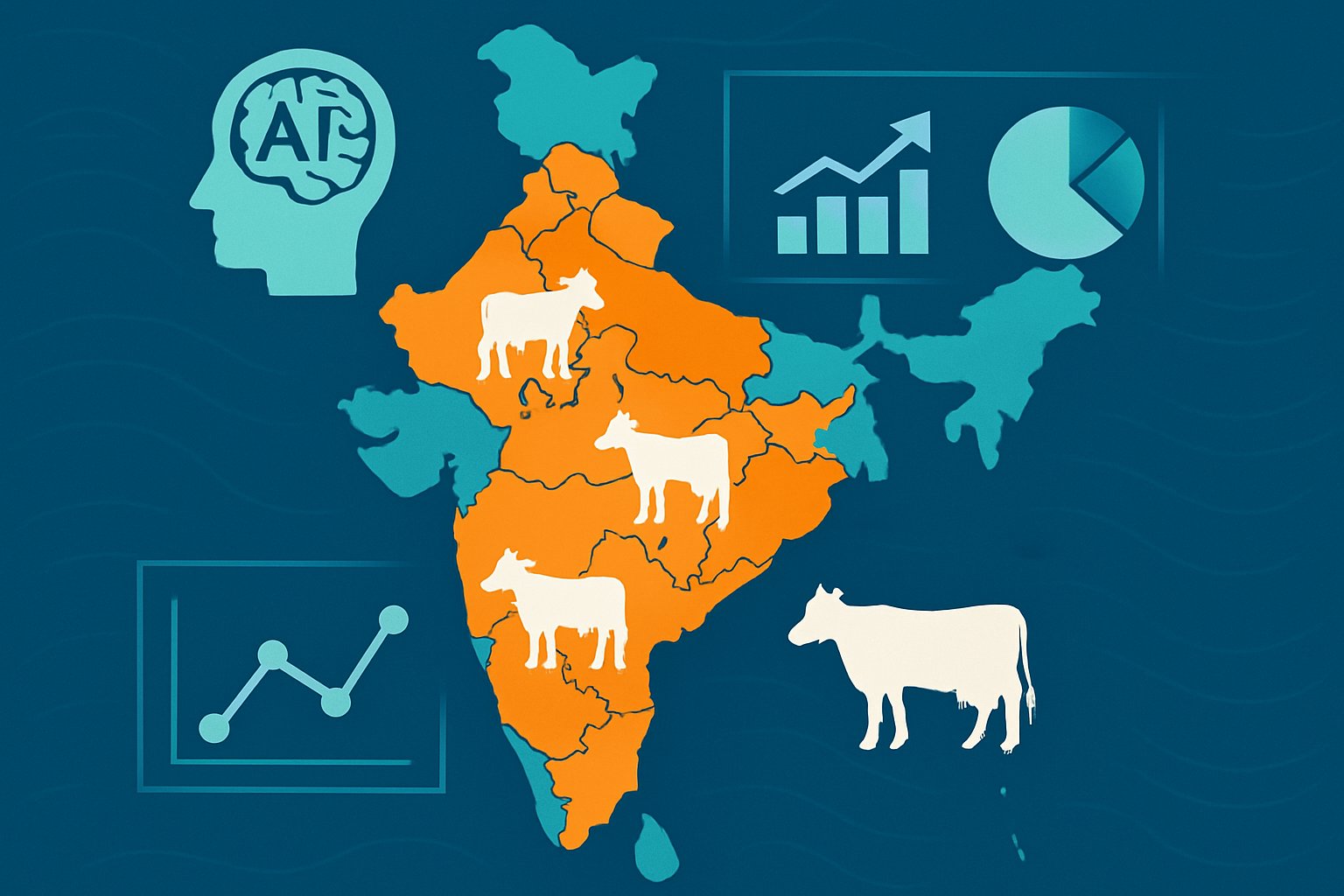
AI CERTS
15 hours ago
India Expands AI Livestock Intelligence To More Dairy States

This report unpacks new deployments, emerging features, and the roadblocks shaping AI Livestock Intelligence adoption.
Furthermore, official milk output rose to 239.30 million tonnes, underscoring why investors chase yield gains.
Meanwhile, cooperative societies number over 235,000 under White Revolution 2.0, creating a vast integration canvas.
Therefore, understanding the players, benefits, and constraints is critical for technology strategists and policy leaders.
The following sections dissect scale metrics, feature innovations, and governance debates shaping AI adoption.
National Digitisation Push
India’s livestock policies now intertwine strongly with digital targets.
Moreover, DAHD’s White Revolution 2.0 explicitly funds sensor and software pilots for cooperatives.
Subsequently, state federations request vendors that embed AI Livestock Intelligence into milk procurement workflows.
That alignment shortens sales cycles and helps startups secure concessional loans from public banks.
In contrast, earlier private pilots lacked such institutional backing and scaled slowly.
Policy support is now material, accelerating platform coverage.
Next, we examine concrete adoption numbers.
Platform Scale Metrics
Several platforms publish aggressive user statistics, though many remain company claims awaiting audit.
Consequently, analysts track momentum through multiple sources.
- Stellapps: about 3.5 million farmers and 14 million litres digitised daily.
- DairyKhata: 2.5 million animal records and 500,000 litres monitored.
- Dvara Surabhi: 900,000 downloads, ₹82 crore loans, 200,000 animals insured.
- eVerse ConnectedCow: nearly 100,000 tracked animals, CowGPT in pilot with NDDB interfaces.
Together, these numbers highlight how AI Livestock Intelligence now touches nearly every milk belt.
However, audited financials and churn figures are still sparse.
Reported metrics reveal momentum but demand independent validation.
Feature innovations shed more light on competitiveness.
Emerging AI Features
Platforms now stack computer vision, IoT collars, and generative models on legacy dashboards.
Additionally, muzzle biometric ID from Dvara ensures unique animal identity for lending and insurance.
Meanwhile, Stellapps integrates mooPay to settle milk payments instantly via Aadhaar-linked wallets.
eVerse pushes conversational support through CowGPT, a domain-tuned large language model.
Every rollout deepens AI Livestock Intelligence by creating continuous data loops for predictive insights.
Moreover, advanced dairy yield modeling predicts lactation curves and feed ratios weeks in advance.
Precision agriculture AI also recommends fodder regimes tailored to local soil and weather.
Subsequently, lenders plug these scores into automated underwriting engines.
Feature depth, not just scale, now differentiates competitors.
Benefits for farmers and processors are becoming measurable.
Benefits For Farmers
Productivity gains headline the selling pitch.
Consequently, early adopters report five to ten percent higher yields, according to vendor case studies.
AI Livestock Intelligence flags heat cycles, allowing timely insemination and reducing calving gaps.
Furthermore, precision agriculture AI guides balanced rations, cutting costly feed waste.
- Real-time mastitis alerts cut veterinary expenses.
- Transparent fat testing secures premium prices.
- Score-based loans arrive within 48 hours.
Moreover, dairy yield modeling informs cooperative planners about procurement fluctuations.
Therefore, stakeholder incentives align around verified performance data.
Evidence indicates tangible income lifts for connected farmers.
Yet obstacles continue to slow universal adoption.
Adoption Barriers Persist
Digital literacy remains uneven across village clusters.
Nevertheless, voice interfaces and vernacular apps mitigate some friction.
Hardware cost still deters smallholders despite subsidies.
In contrast, larger dairies absorb collar expenses within procurement margins.
Data bias also hampers AI Livestock Intelligence, notably for indigenous breeds missing in training sets.
Furthermore, limited connectivity disrupts sensor data flows during monsoons.
Subsequently, missed data widens model error margins.
Addressing these gaps is vital for credibility.
Data ownership debates add another layer.
Governance And Data
Who controls livestock metadata remains a contested issue.
Moreover, privacy frameworks for animal and farmer data are nascent.
NDDB integration pilots promise unified registries, yet formal APIs are pending.
Consequently, cooperatives hesitate before sharing sensitive procurement information.
For trust, platforms plan certification through programs such as the AI + Supply Chain Certification.
Additionally, open governance could accelerate precision agriculture AI adoption by standardising data contracts.
Therefore, policymakers and vendors must co-design consent models and redress mechanisms.
Robust governance will unlock scalable, ethical innovation.
The final section maps future opportunities.
Outlook And Opportunities
Market signals point to continued double-digit platform growth.
Moreover, generative interfaces will likely mainstream advisory services over WhatsApp and IVR.
AI Livestock Intelligence is poised to underpin nationwide dairy yield modeling, credit scoring, and carbon tracking.
Furthermore, precision agriculture AI will converge with weather stations to personalise fodder regimes per village.
Investment funds increasingly demand validated impact metrics, forcing vendors to publish peer-reviewed studies.
Subsequently, we expect academic-industry partnerships for model accuracy audits.
AI Livestock Intelligence must also prove cost parity with existing manual practices to win laggard cooperatives.
Nevertheless, early evidence, policy backing, and capital influx suggest the tipping point is near.
Industry watchers should prepare for broader consolidation and global export ambitions.
That trajectory underscores the urgency for skills development.
Conclusion And Action
India’s dairy digitisation story is accelerating.
Consequently, platforms embedding AI Livestock Intelligence will shape productivity, finance, and regulation in the next decade.
However, adoption gaps, data governance, and validation hurdles remain.
Stakeholders can tackle these issues through open standards, farmer training, and audited research.
Professionals can future-proof careers by earning the AI + Supply Chain Certification.
In contrast, ignoring this shift risks strategic obsolescence.
Act now, study evolving data standards, and engage with pilots to capture upcoming value.



